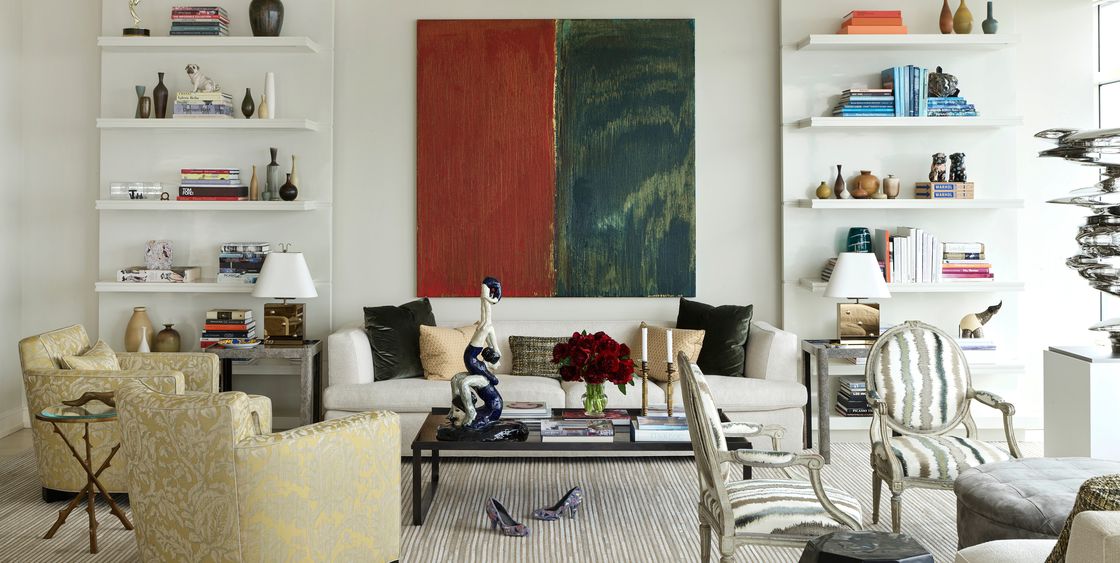The pandemic is in effect telescoping the future of our homes. Trends that might have taken five or 10 years to play out have unfolded in only two months, and all point in the same direction. To a world turning further inward.
One thing is for certain: The way we create live-work spaces and our homes will be drastically different than the way it was pre-pandemic.
Design is going to be much more personal and in some ways technical, as people use their homes for work, school, and beyond. Designers are going to have to be very conscious and thoughtful about how to make people’s lives better in the spaces they have. Here are the key features people will ask for in their homes in the near future – many of which we identified in our trends report at the start of 2020, which are still applicable, and have even accelerated and matured. This really is a follow-up, highlighting key trends that have fast-tracked and just sped up looks that were already underway as a result of COVID-19, plus a few new ones to watch as the world embraces novel habits. Read more, ‘How Previous Pandemics Have Impacted Home Design.’
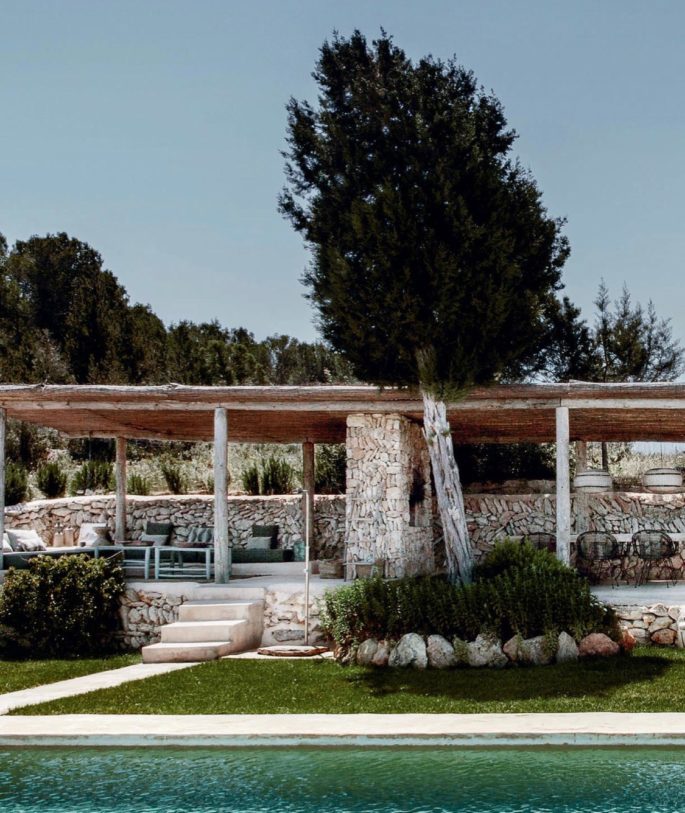
People will seek to carve out their own private outdoor spaces—balcony, patio or fully landscaped gardens with pools —and many will look to design experts to create these fresh-air havens. Image via Elle Decoration UK.
1. Reimagined layouts
It turns out an open floor plan isn’t acoustically ideal for multiple simultaneous conversations, something most of us didn’t fully realize until the coronavirus quarantine forced families to work from home alongside partners, and children. The only place where you can peacefully talk on the phone and participate in a private conversation is in a dark cupboard. Read more, ‘Tips For Remaking Your Space While You’re Homebound.’
Flexibility is key in space planning, as is designating areas based on a specific function.
We can expect to see a shift back toward a more traditional floor plan style. Modern open-plan living is popular for many reasons, but during this period, we are realizing it can be a hindrance when our work lives merge into our living spaces. A surprising advantage of historic homes is that the spaces are clearly defined by separate rooms—allowing for a distinct demarcation between home and work life.
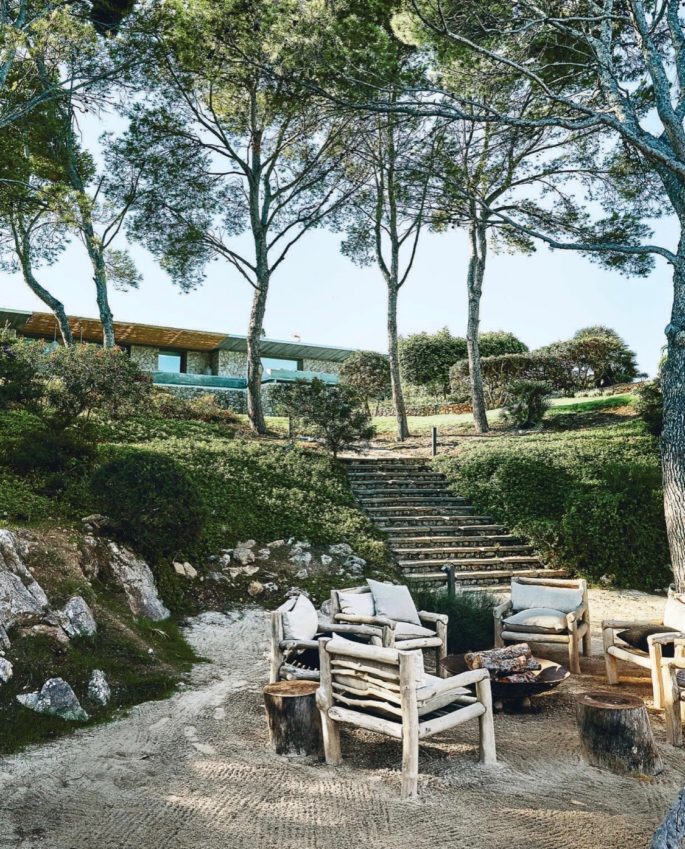
Designing alfresco areas will take on renewed importance post-COVID-19. Image via Elle Decoration UK.
2. Clearly defined spaces
Taking the concept of reconfiguring the home a step further, clearly delineating space is of utmost importance in terms of establishing efficient spaces in which we live, work, learn, and play within one residence. Moving forward, there will definitely be a trend and acceptance towards more working from home. Read more, ‘How Coronavirus Will Change Our Homes In The Next Decade.’
A thoughtfully designed home can foster increased productivity, balance,
health, and pleasure.
Mum’s home office can’t intermingle with Dad’s workout space—in the same area as the makeshift homeschooling spot that’s also the playroom, which is all smack in the middle of the living room. How do you create a modern home, a modern floor plan for a modern family? The open-plan concept probably doesn’t work so well if more than one person is working from home or if the kids are being noisy, so that concept may be refined with partitions to dedicate space for working/home office—or some hybrid where the communal spaces are open concept, but they are supplemented by adjacent spaces that can accommodate quiet, focused activities or work.
Mobile partitions with acoustic properties could be a viable solution. While some movable walls and products to enhance acoustics are better suited for commercial settings. Pull-out Murphy beds, which neatly stow away when not in use, are a flexible solution to equip a spare room that can double as a guest room, home office or media room. Many companies offer modern, updated versions of the classic space-saver – we have them in our city pad.
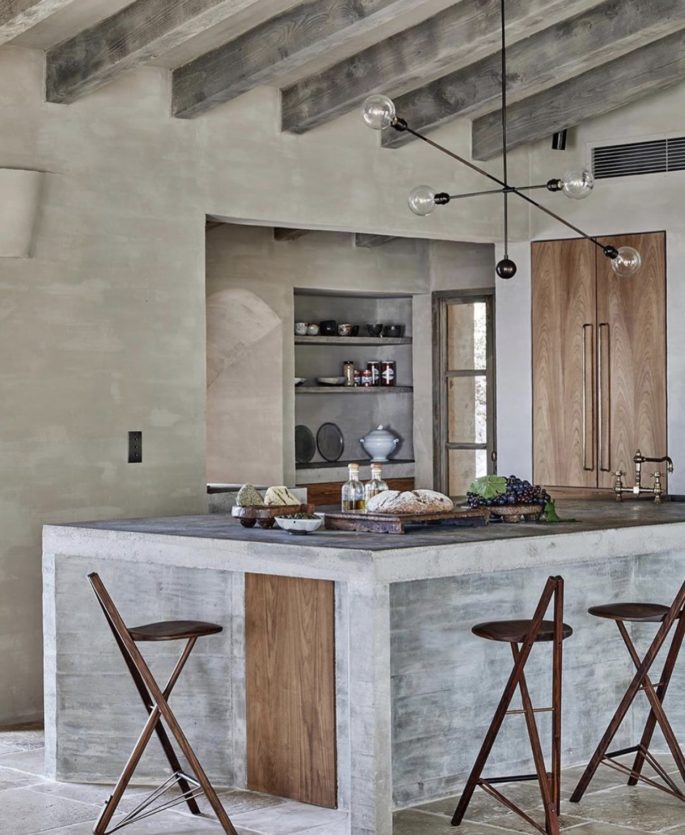
Kitchens will regain importance as people are no longer eating out or ordering in, and cooking increases due to both necessity and enjoyment. Since of us will want bigger kitchens with more room to store food and additional places to sit. Image via Elle Decoration UK.
3. WFH functionalities
Home offices now must be fully functional with proper seating, work surfaces, lighting, acoustics, and temperature control. Rather than working from the dining room or family room shared with kids, by differentiating spaces we can empower people to be just as productive from home as they [would be] in an office setting. Read more, ‘How To Work From Home If You Have Never Done It Before.’
Ergonomics in all environments has never been more important.
People previously could get away with having a subpar chair at their house when they only worked in that chair one day a week, but if they’re going to be working from home two, three, four days a week, they’re going to need to make sure both working environments, home, and work, are fully equipped to support them. To accommodate home offices, some contract furniture manufacturers readjusted their business models to sell direct to consumers. Greg Hayes, CEO, and co-founder of office furniture startup Branch, explains that while his company’s B2B business (which historically comprised 99% of sales) has come to a halt, they’ve found success by pivoting to selling direct-to-consumer. “The explosive consumer demand for office furniture, as people realize they need proper work-from-home equipment, has helped our business grow in an area that we didn’t plan on focusing on for another year or so,” he says, reporting that the number of individual transactions has skyrocketed—over 100% growth week-over-week.
Dedicated space for virtual meetings will also be paramount, and acoustics will
become a higher priority.
A private communication room will be important moving forward…a space intended for anyone in the family to use for digital communications whether for social, business, or educational purposes with the requirements of the space including soundproofing and great lighting.
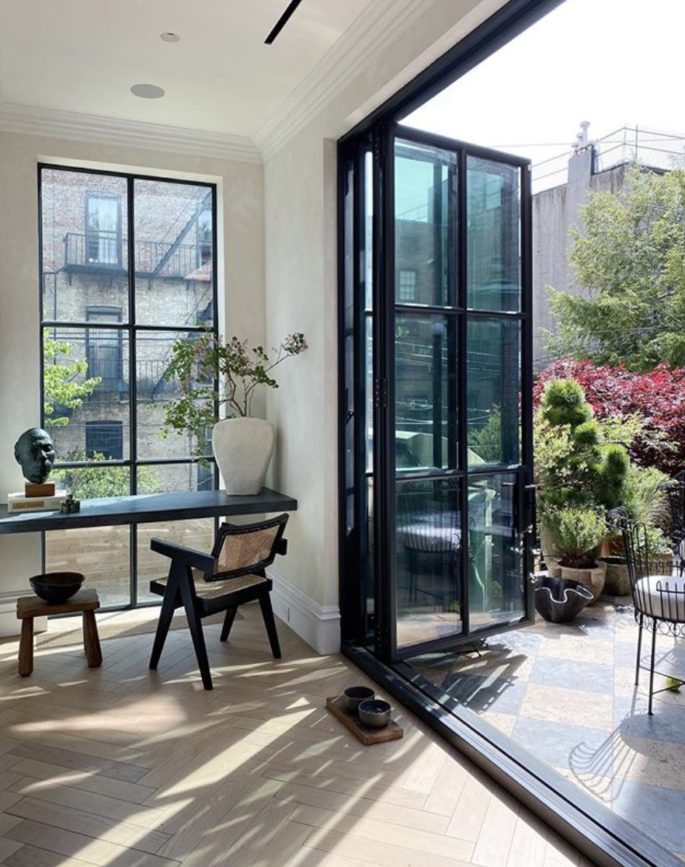
Home offices will be a big factor, so utilising any indoor nooks will be vital. Image via @EyeSwoon instagram
4. Working out at home
With gyms closed for months, people have resorted to at-home workout regimens. But where does exercise take place when a partner is on a conference call and the kids are on an all-class Zoom meeting? Home gyms have become almost as important as the home office. While a high percentage of home gyms may not have previously been used, they probably are now that wellness at home has become more of a focus. Research shows bike sales have significantly spiked. That creates opportunities for designers. Workout and home-gym opportunities will be a big factor, so utilizing any outdoor space or available indoor nooks will be vital. Read more, ‘The Home Lockdown Guide: How To Prepare For Coronavirus Quarantine.’
5. Outdoor living options
Designing alfresco areas will take on renewed importance post-COVID-19. People will seek to carve out their own private outdoor space—balcony, patio, garden, or fully landscaped backyard—and many will look to design experts to create these fresh-air havens. Incorporating water, fire, light, and natural species are a few key elements, along with appropriate seating and in some cases a trellis or canopy. Read more, ‘6 Outdoor Furniture Trends of 2020- For Any Budget.’
People will need to consider whether the space will be used passively, as an area to gaze out on from inside; or more actively, as a space to sit and have coffee, work, relax, read, work out, entertain, or just ‘be’.
A lot of people will thinking about expanding their outdoor living area in front of the house by putting in furniture where people could sit and socialise with neighbours without getting too close. When you’re cooped up inside you really want to say hi to people in the street.
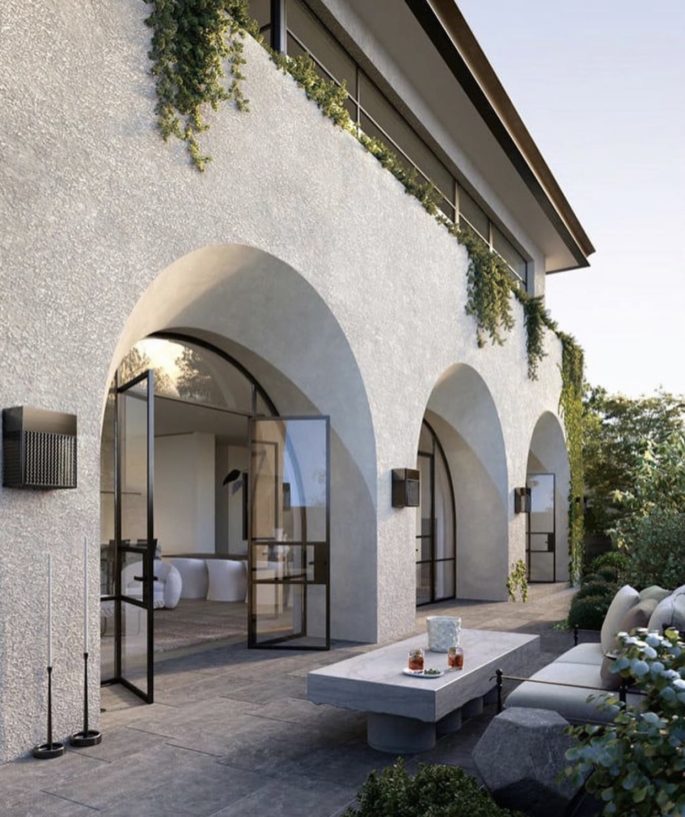
A lot of people will thinking about expanding their outdoor living area in front of the house by putting in furniture where people could sit and socialise. By @jolson_architecture and Garden @mylesbaldwin
6. Wellness and health integration
As the global community at large has spent much more time at home these days, one thing has certainly come to mind: A home should be a sanctuary,” Recent times have shined a light on the importance of fully decked-out master bedrooms, bathrooms, and guest rooms. In the guest room, a quarantined member of the household, or a guest in later times, can have their own dedicated fridge, contributing to a much more hygienic household overall, as well as creating a sense of comfort and privacy. Read more, ‘Going Full Circle: An Ultra Simple Approach to Sustainability.’
Meditation areas and spa-style bathrooms with large soaking tubs, natural light, views to the outdoors, and integrated electronics will become essential.
Kitchens and gathering spaces have always been priorities but will become especially significant moving forward in a post-COVID world. Beyond functioning as the hub of the home, kitchens regain importance as people are no longer eating out or ordering in, and cooking increases due to both necessity and enjoyment. Since the closure of restaurants has increased people’s cooking, most of want a bigger kitchen, with more room to store food and additional places to sit.
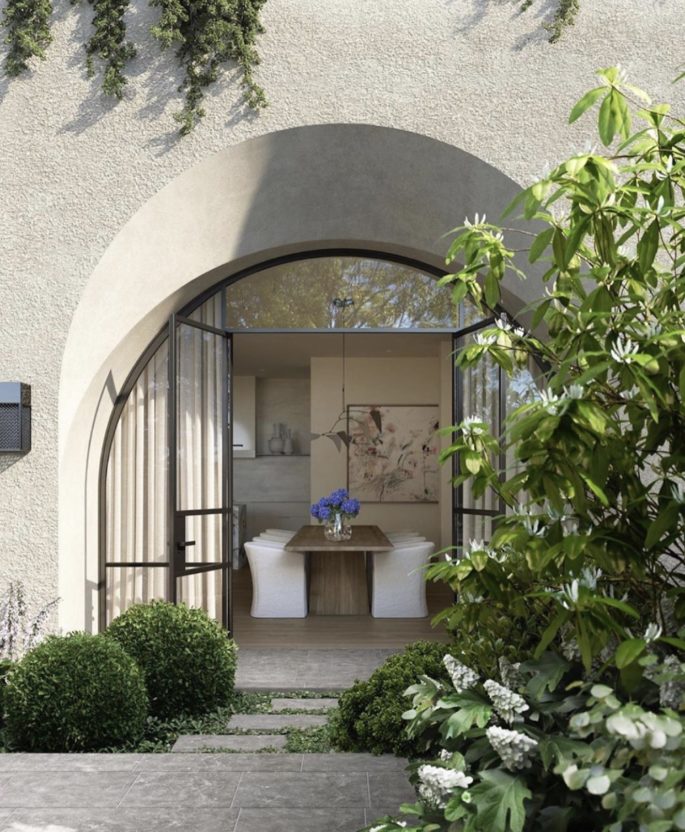
By @jolson_architecture and Garden @mylesbaldwin
7. Cleanliness: protective everything
After experiencing a world that has widely adopted hospital-grade sanitation protocols, people will expect continued high standards, and will seek designs and services that help to safeguard them from germs, viruses, pollutants, and more.
Hygiene products will continue to trend.
Antibacterial and antimicrobial surfaces will be big news in our homes, such as porcelain tiles, quartz, granite, solid-surfacing like Corian, or laminate countertops like Laminex, Formica or Wilsonart, in kitchens and bathrooms; stainless steel for appliances; and copper and krion may become more common for countertops and bathroom finishes. Touchless faucets are gaining popularity, Kohler offering highly rated automatic tap options. While touchless lavatories are another way to promote cleanliness and reduce the transfer of germs, Kohler and Duravit are among the manufacturers with top efficient touchless models. Duravit also produces an innovative bidet, which is gaining traction at a moment when everyone is obsessed with sanitation and toilet paper is at a premium.
8. Mudrooms
Entries will convert from makeshift spaces to fully equipped transition spaces, and secure areas for contactless delivery of packages, groceries, and meals will become commonplace. Designers will incorporate this newfound focus on hygiene and ‘clean-ability’ in innovative and creative ways. Think an incredibly chic mudroom—guests and family members can disinfect outdoor gear in an environment designed to instill one with a feeling of beauty, health, and safety before transitioning into the home. If space doesn’t allow for a mudroom, people may set up a sanitary station in the garage with disinfectant wipes, disposable gloves, mask storage, and a sink for hand-washing, and, at every entrance to the home, a decontamination zone.
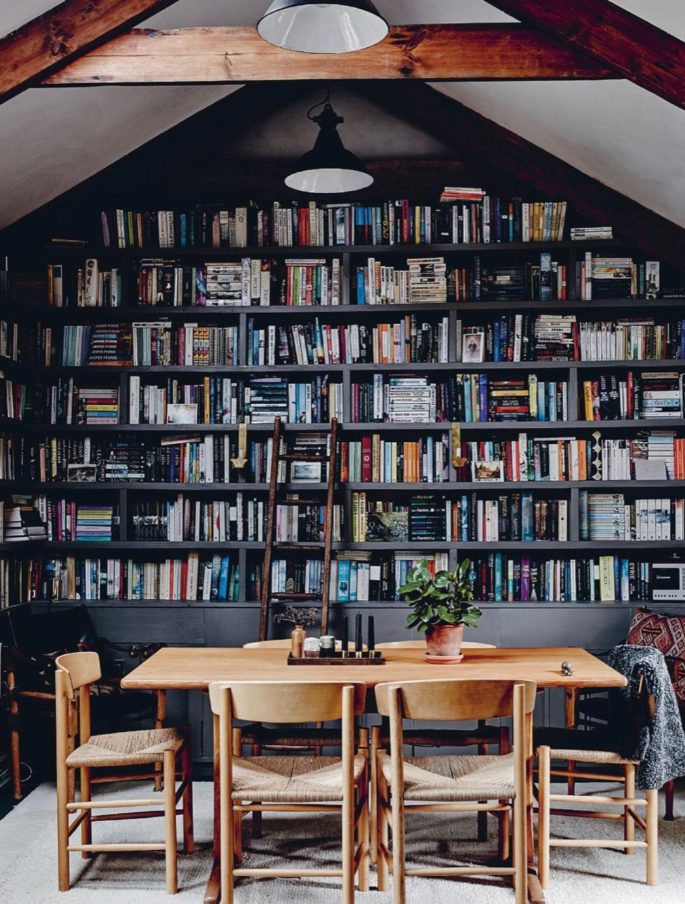
Image via Elle Decoration UK
9. Less becomes more
Many homeowners may have mastered the Marie Kondo Method of decluttering their dwellings—or maybe they just had too much time on their hands and spring cleaning turned into a major purge.
People have learned to live with less while on lockdown, and that can free up some space for post-COVID-19 living.
People will have a better sense of how they live in existing homes and what amenities and spaces they do or do not need. We think a major outcome will be people’s relationship to the things that populate their homes. Most houses have too much stuff, and sheltering in place has pushed people to purge unnecessary and unwanted things. We hope this encourages people to bring in fewer but better items when they do shop. Less is indeed more.
10. A Little Extra Tiny House
Building a separate structure, no more than 20 square metres, so a member of your family can go to distance from the others when they need space. This cabin, or shed, would have a sofa or bed and a study area. That would allow a sense of getting away when travel is impossible.

